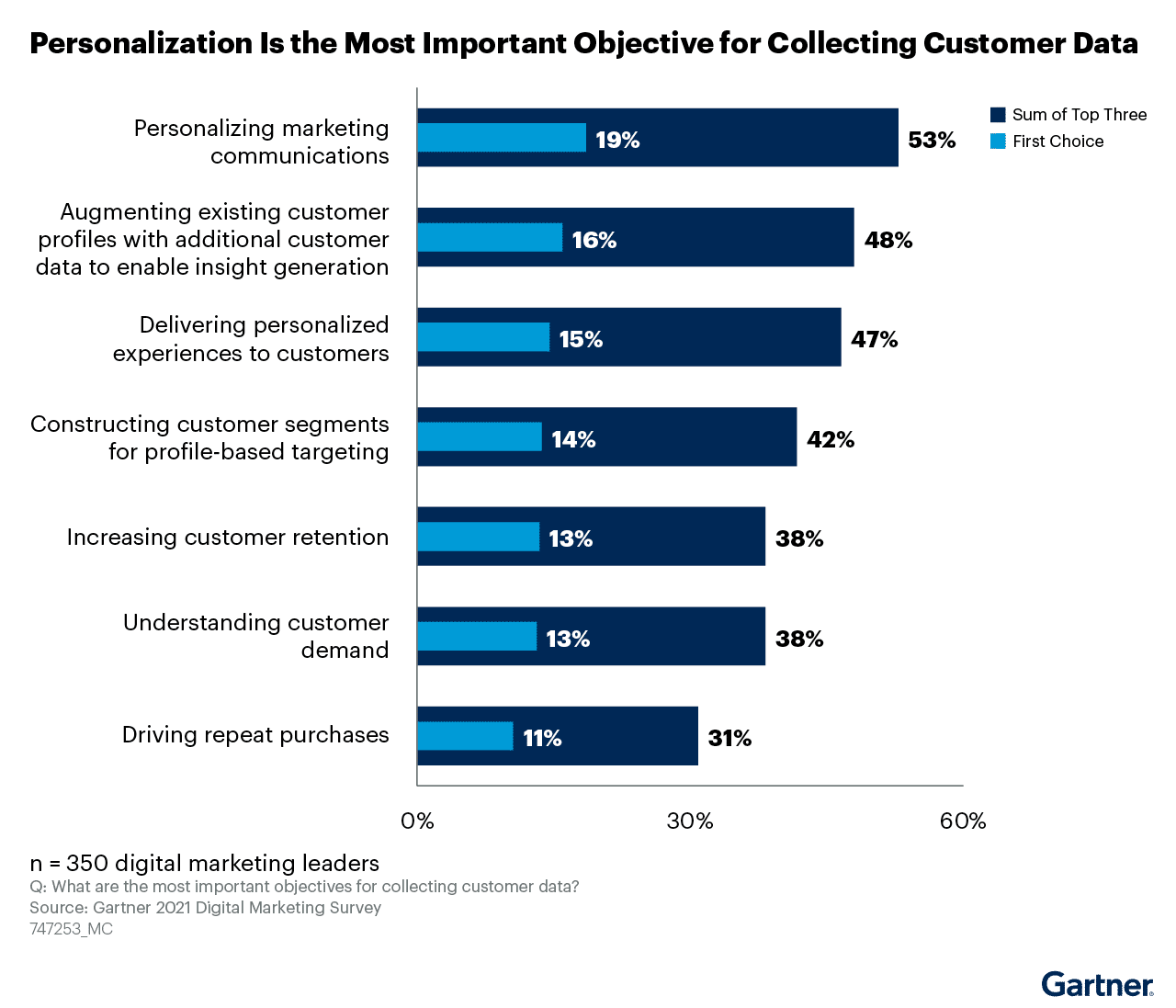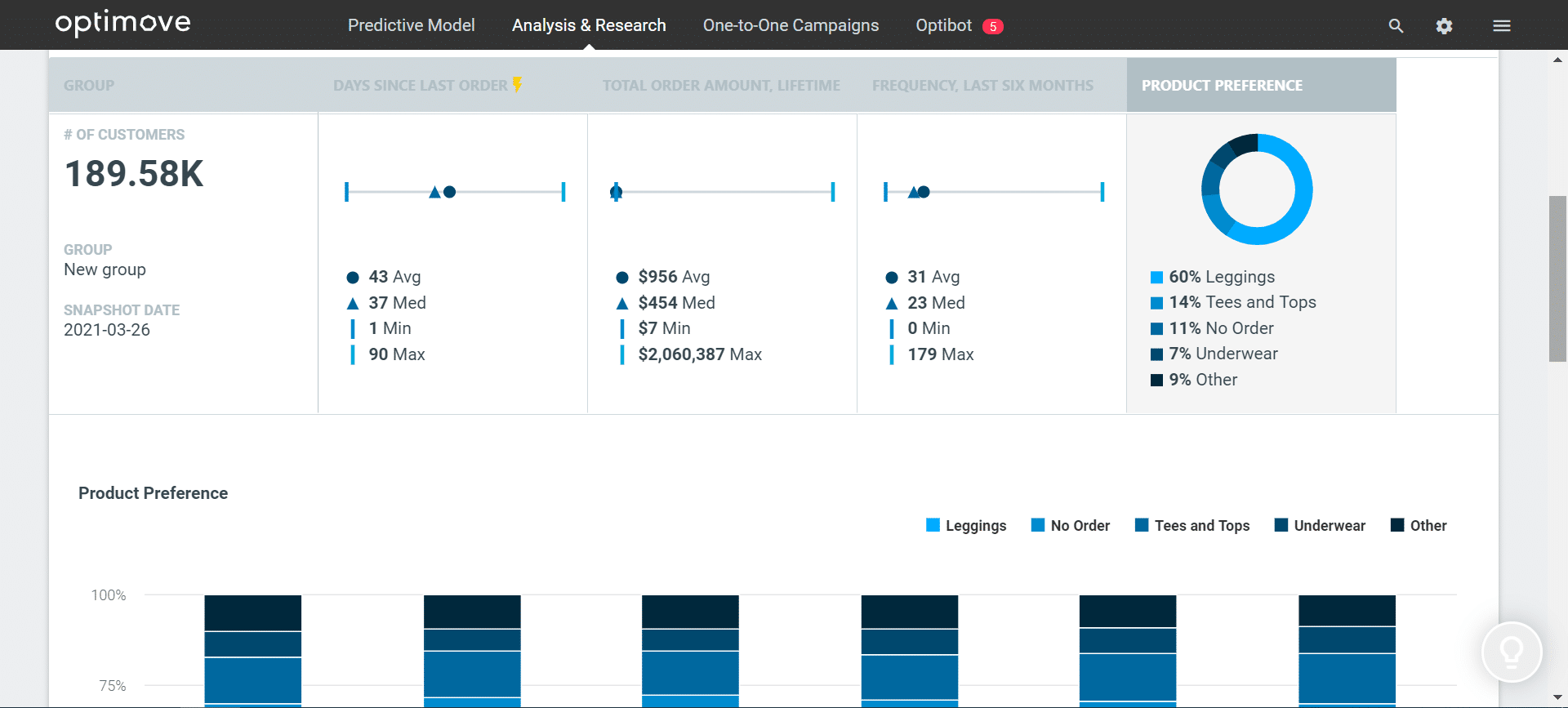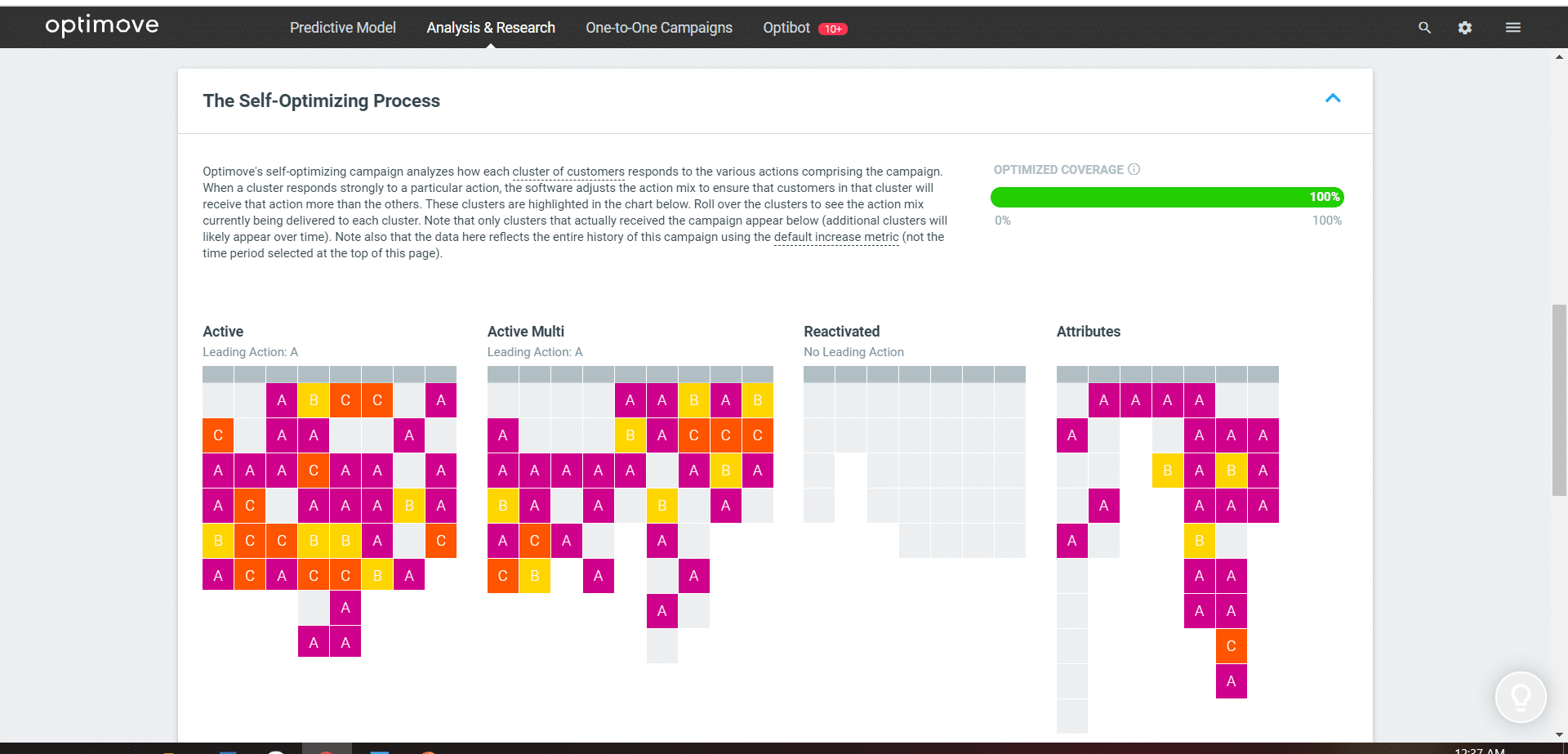
AI and the Retail Marketer’s Future
How AI transforms strategy and processes, driving the adoption of Positionless Marketing
Exclusive Forrester Report on AI in Marketing

Personalization in the marketing world is a concept that has been thrown around for a long time. It has meant everything from placing a customer’s name in an email, to dynamically matching the best available offer with each customer, in realtime. Although the first example has easily been solved for, the latter is much more elusive.
Why?
Well because that sort of personalization and scale requires you to excel at four different sets of capabilities: data management, analytics, decisioning, and execution. What follows is an explanation of what to look for in each.
Customer Data Management for Personalization
Customer data and personalization go hand in hand. Take for example the results of Gartner’s 2021 Digital Marketing Survey where respondents singled out personalization as the most important objective for collecting customer data.

But collecting the data will only get you so far. Without making sense of that data by unifying it into a single customer view, your ability to succeed will be capped. A different way of thinking about this is that the more data silos you have, the harder it will be for you to access, integrate, and eventually use your first-party customer data for personalization.
Analytics that Drive Personalization
Once your data is taken care of, your focus should change to discovering customer insights that will help you create valuable personalization tactics. The more granular you get with these insights, the more personalized your customers’ experience will be.
To succeed in this task, you will want to combine demographic and transactional data from several different sources into that single customer view. If you are a digital-native brand, this might be simpler than if most of your business is conducted offline where data might only be available once a day, week, or even month. Whatever the case, you will want to overlay some level of realtime behavioral data on top of your historically collected customer data to provide a layer of contextuality.
This robust combination of data can allow you to easily create and explore micro-segments to fuel your customer understanding and power your personalization efforts. If your customer database is large in number of records and customer attributes, then some form of AI might be helpful to proactively surface customer insights and segments for you.

Scaling Personalization with Decisioning
Once you have your micro-segments, it is time to think about orchestrating your CRM journeys. As you will discover, the more granular you get, the greater the burden (to not say impossibility) of creating individualized experiences that are manually mapped in traditional white-canvas journey builders. That is where having an AI-based decisioning engine takes you to the next level.
It is worth pausing a minute to discuss a common misconception marketers face when thinking about decisioning. Specifically referring to the desire to create 1-to-1 personalization. The truth is that 1-to-1 personalization at scale can only be achieved through micro-segmentation. If you continuously put in the work to discover micro-segments that combine historical, transactional, demographical, and realtime behavioral data, then your personalization strategy will lead to an experience that, for customers, will feel 1-to-1.
But how can such journey mapping be done manually? Well, it cannot.
A strong AI-based decisioning engine will be able to ensure you provide a symmetric personalized experience across channels to each and every one of your customers. It will also ensure that, as you add additional micro-segments, your CRM journeys do not crossfire or break.
Personalizing Last-Mile Execution
The final capability you will need is the last mile execution. To succeed at this stage, you should leverage the customer insights that are descriptive of your micro-segments. These insights will help you build impactful treatments that can then be delivered to each individual customer.
As you build out your messages and treatments being able to continuously test and automate them becomes crucial. Multivariate testing of treatments to determine a definite winner is a good start, but if your goal is to personalize for each customer, then it isn’t the best approach. Here to, leveraging AI to continuously optimize the best treatment for each micro-segment. That way, each customer will receive the best treatment for them, every time.

Closing thoughts
Scaling personalization is only possible by deepening customer understanding to increase relevance and optimizing execution through strong decisioning, testing, and automation.
Whether be it by helping unify data, build micro-segments, orchestrate personalized multichannel experiences, or send out specific messages, the path to personalization is a difficult one. Brands that trust Optimove, leverage it to excel at all personalization capabilities and grow customer lifetime value by 33%. We are here if you’d like to keep the conversation going.
Exclusive Forrester Report on AI in Marketing
In this proprietary Forrester report, learn how global marketers use AI and Positionless Marketing to streamline workflows and increase relevance.


Rony Vexelman is Optimove’s VP of Marketing. Rony leads Optimove’s marketing strategy across regions and industries.
Previously, Rony was Optimove's Director of Product Marketing leading product releases, customer marketing efforts and analyst relations. Rony holds a BA in Business Administration and Sociology from Tel Aviv University and an MBA from UCLA Anderson School of Management.


